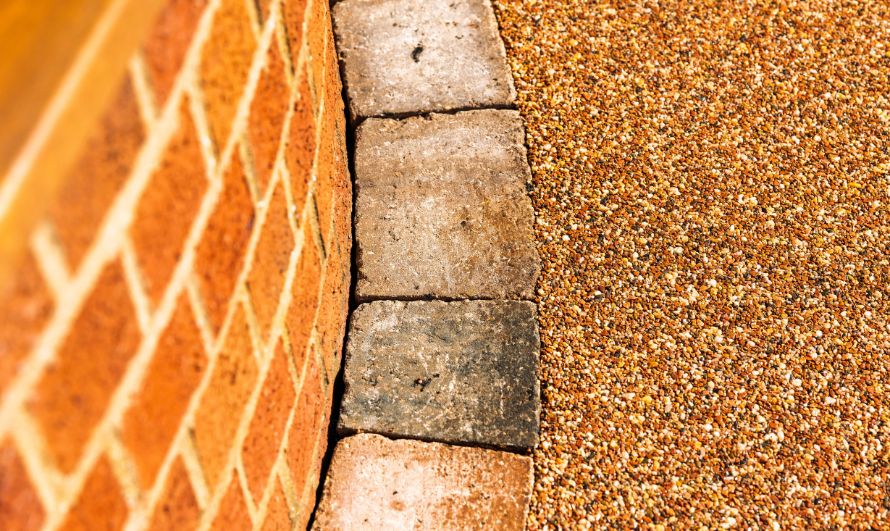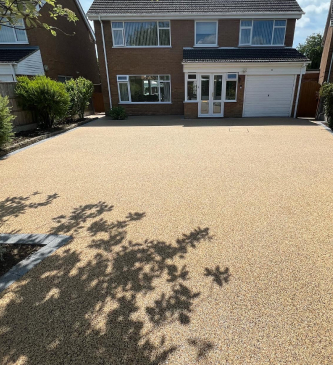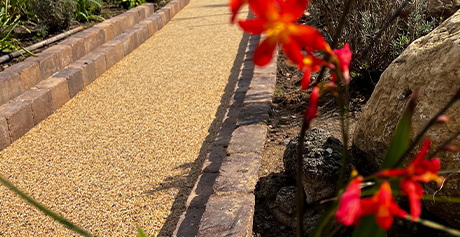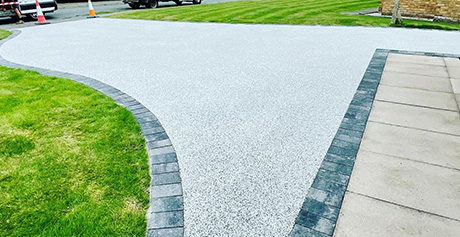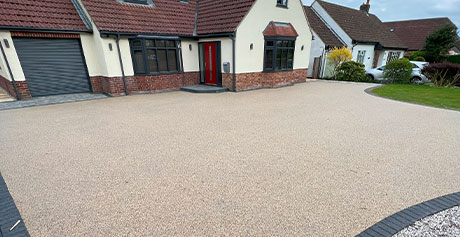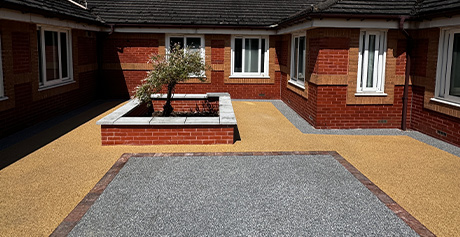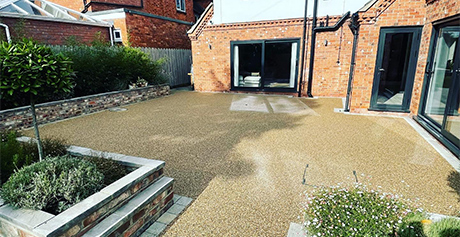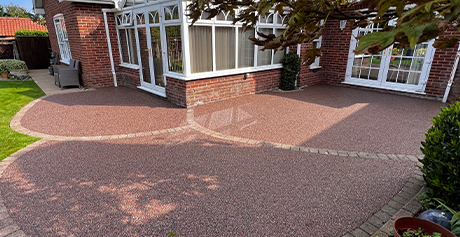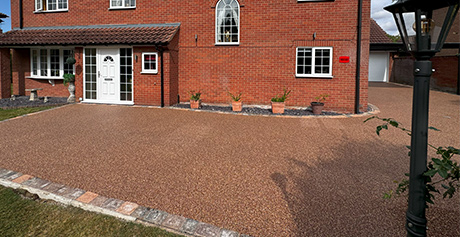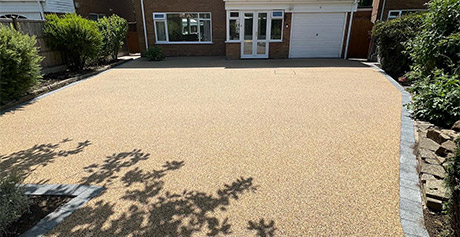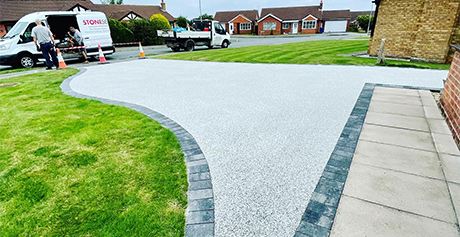Resin Bound Surface Permeability
October in the UK often means unpredictable weather; from gentle drizzle to torrential downpours that leave puddles everywhere. But while stormy weather can cause havoc for many driveways and paths, resin bound surfacing stands out as a practical, attractive, and long-term solution.
In this blog, we’ll look at how resin bound surfacing copes so well with heavy rain, what makes it different from other materials, and why it’s one of the best ways to protect your property during wet weather.
Why Autumn Weather Puts Surfaces to the Test
When the heavens open, many traditional driveway materials struggle to cope. Tarmac and concrete can develop puddles, block paving allows weeds to grow between joints, and gravel tends to wash away.
In contrast, resin bound surfacing handles these challenges effortlessly. It’s designed to be fully permeable, allowing water to drain naturally rather than sitting on the surface. This is particularly important in October and November, when UK rainfall is typically at its highest.
If you’re curious about the wider environmental benefits, take a look at our blog on Why Resin Bound Surfacing is the Best Eco-Friendly Option.
The Science Behind Resin Bound Permeability
The secret lies in the structure. A resin bound surface is made by mixing natural aggregate with a specialist resin. This mixture is then laid over a suitable base and trowelled smooth. Unlike resin-bonded surfaces or tarmac, there are tiny voids between the stones that allow water to flow through freely.
This means:
- No standing water or puddles.
- Reduced surface water runoff, which helps prevent local flooding.
- Less pressure on drains during heavy rain.
In fact, a properly installed resin bound surface can allow thousands of litres of water to pass through every square metre each hour. That’s why it’s often recommended for sustainable drainage systems (SuDS) — a key part of modern, eco-conscious landscaping.
You can find more about SuDS principles from the official UK Sustainable Drainage Systems guidance.
How Resin Bound Surfacing Helps Prevent Flooding
Flooding is a growing issue across the UK, with more frequent storms and intense rainfall. The Environment Agency stresses the importance of preventing surface water from overwhelming local drains and resin bound surfacing can play a big role in that.
Unlike impermeable materials, resin bound driveways and pathways absorb and manage rainwater naturally. The water passes through the surface into the ground below, mimicking the way natural soil works.
For more on how you can help protect your home from flooding, the Environment Agency’s flood prevention guide is a great resource.
Durability in Stormy Conditions
Resin bound surfacing isn’t just about drainage; it’s built to last. During stormy weather, wind and rain can put stress on outdoor surfaces, but resin bound materials stay strong. The stones are held firmly in place by the resin, preventing erosion, cracking, or movement.
Because the surface is seamless, there are no joints or loose stones to worry about either. That makes it ideal for homes in exposed areas or regions with frequent rainfall.
For peace of mind about what’s involved in the installation process, check out our detailed guide on What to Expect from a Resin Bound Driveway Installation.
Low Maintenance During Wet Seasons
Another advantage of resin bound surfacing is its low maintenance. When autumn storms hit, debris such as leaves or twigs can be easily swept away with a broom or garden blower. The surface doesn’t trap dirt, so water drains quickly, keeping your driveway or path looking tidy even after heavy rain.
A quick hose down once in a while is all it takes to keep things clean. Unlike gravel or block paving, you won’t have to worry about re-levelling or weeding.
A Smart Choice for Sustainable Homes
Beyond practical benefits, resin bound surfacing is a sustainable choice that fits well with modern environmental goals. By reducing water runoff and allowing rainwater to soak naturally into the ground, it supports biodiversity and helps manage drainage responsibly.
For homeowners looking to future-proof their property, this makes resin bound surfacing a long-term, eco-friendly investment – particularly as climate change brings more unpredictable weather to the UK.
Conclusion
As we move into the stormier months of autumn, now is the perfect time to think about how your driveway or pathways handle rain. Resin bound surfacing offers an attractive, durable, and eco-friendly solution that performs brilliantly in wet weather.
From its clever permeable structure to its resistance against erosion, it’s designed to cope with whatever the British climate throws at it. Whether you’re upgrading an old driveway or planning new garden paths, resin bound surfacing helps protect your property from flooding while keeping it looking beautiful, rain or shine.
FAQs
Can resin bound surfacing flood during heavy rain?
No, resin bound surfaces are fully permeable, so water drains through them naturally instead of pooling on top.
Does water affect the strength of the resin over time?
Not at all. The resins used are UV-stable and weather-resistant, designed to handle all seasons without softening or cracking.
Do I need extra drainage with resin bound surfacing?
Usually not, as the surface itself manages rainwater effectively. However, your installer will assess whether additional drainage is needed for your property.
